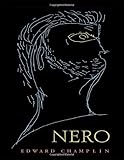Nero / Edward Champlin.
Material type: TextPublisher: Cambridge, MA : Harvard University Press, [2009]Copyright date: 2005Description: 1 online resource (360 p.)Content type:
TextPublisher: Cambridge, MA : Harvard University Press, [2009]Copyright date: 2005Description: 1 online resource (360 p.)Content type: - 9780674029361
- 937.07092 21/eng/20230216
- online - DeGruyter
| Item type | Current library | Call number | URL | Status | Notes | Barcode | |
|---|---|---|---|---|---|---|---|
 eBook
eBook
|
Biblioteca "Angelicum" Pont. Univ. S.Tommaso d'Aquino Nuvola online | online - DeGruyter (Browse shelf(Opens below)) | Online access | Not for loan (Accesso limitato) | Accesso per gli utenti autorizzati / Access for authorized users | (dgr)9780674029361 |
Browsing Biblioteca "Angelicum" Pont. Univ. S.Tommaso d'Aquino shelves, Shelving location: Nuvola online Close shelf browser (Hides shelf browser)

|

|

|

|

|

|

|
||
| online - DeGruyter Nature and History in American Political Development : A Debate / | online - DeGruyter On Intelligence : A Biological Treatise on Intellectual Development, Expanded Edition / | online - DeGruyter The Reading Crisis : Why Poor Children Fall Behind / | online - DeGruyter Nero / | online - DeGruyter Shaping the Industrial Century : The Remarkable Story of the Evolution of the Modern Chemical and Pharmaceutical Industries / | online - DeGruyter Scale and Scope : The Dynamics of Industrial Capitalism / | online - DeGruyter Inventing the Electronic Century : The Epic Story of the Consumer Electronics and Computer Industries, With a New Preface / |
Frontmatter -- Contents -- Illustrations -- 1 The Once and Future King -- 2 Stories and Histories -- 3 Portrait of the Artist -- 4 The Power of Myth -- 5 Shining Apollo -- 6 Saturnalia -- 7 One House -- 8 Triumph -- Epilogue -- Note on Sources -- Bibliography -- Notes -- Acknowledgments -- Illustration Credits -- Index
restricted access online access with authorization star
http://purl.org/coar/access_right/c_16ec
The Roman emperor Nero is remembered by history as the vain and immoral monster who fiddled while Rome burned. Edward Champlin reinterprets Nero's enormities on their own terms, as the self-conscious performances of an imperial actor with a formidable grasp of Roman history and mythology and a canny sense of his audience.Nero murdered his younger brother and rival to the throne, probably at his mother's prompting. He then murdered his mother, with whom he may have slept. He killed his pregnant wife in a fit of rage, then castrated and married a young freedman because he resembled her. He mounted the public stage to act a hero driven mad or a woman giving birth, and raced a ten-horse chariot in the Olympic games. He probably instigated the burning of Rome, for which he then ordered the spectacular punishment of Christians, many of whom were burned as human torches to light up his gardens at night. Without seeking to rehabilitate the historical monster, Champlin renders Nero more vividly intelligible by illuminating the motives behind his theatrical gestures, and revealing the artist who thought of himself as a heroic figure.Nero is a brilliant reconception of a historical account that extends back to Tacitus, Suetonius, and Cassius Dio. The effortless style and artful construction of the book will engage any reader drawn to its intrinsically fascinating subject.
Mode of access: Internet via World Wide Web.
In English.
Description based on online resource; title from PDF title page (publisher's Web site, viewed 26. Aug 2024)


